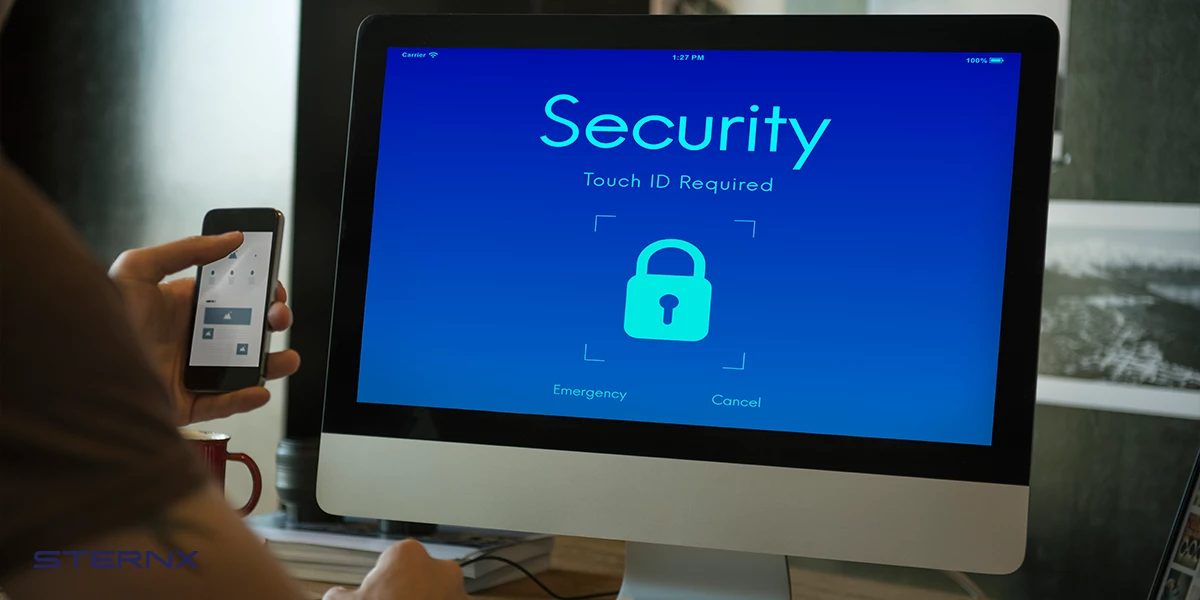Table of Contents
Student digital safety has become an increasingly important issue globally as technology usage grows among young people. With the rise of smartphones, social media, and other online platforms, students face various cybersecurity risks that can impact their well-being and academic performance. However, through collaborative efforts between schools, parents, and communities, we can empower students to safely navigate the digital world.
Understanding the Cyber Threats Facing UAE Students
The rapid digitization of society has provided incredible opportunities for learning and growth, but also exposed students to various online risks. Some of the major cybersecurity threats facing students in the UAE include social engineering, cyberbullying, hacking, identity theft, and exposure to inappropriate content. Social engineering refers to manipulation tactics used by predators to build relationships, groom, exploit or harass students. This could involve catfishing students by pretending to be another child online, gaining trust through fake profiles, or blackmailing students with sensitive information. Predators often target minors on social media, chat forums or gaming platforms.
Cyberbullying is another prevalent threat, involving recurring aggressive online actions to embarrass, threaten or isolate victims. It can take the form of offensive posts, rumors, impersonation, doctored images or videos, or exclusion from online groups. Cyberbullying can cause severe psychological trauma, sleep disorders, depression, anxiety and lead to absenteeism, poor academic performance or even self-harm. Hacking involves unauthorized system access to steal credentials, financial information or private data. Students often have poor password hygiene, reused passwords and unsecured devices that make them easy targets. Hackers can gain access to social media, email, or financial accounts leading to identity theft, damaged reputations, or financial fraud.
Phishing scams are also common, using spoofed emails, sites or ads mimicking trusted brands to trick users into sharing login details, bank information or download malware. Lack of awareness makes students vulnerable to phishing resulting in credentials compromise or malware infections.
Lastly, easy access to adult content can distort perspectives on relationships and sexuality. Developmentally inappropriate or violent content can also desensitize impressionable minds and promote harmful behaviors. Safes parental controls and monitoring make it difficult to shield minors from potentially damaging material.
Addressing these threats requires updated guidance, digital literacy programs, safer defaults, and tighter controls to create a safe online environment as technology usage expands among youth. With proactive efforts, students can harness technology’s potential while avoiding associated risks.
Students in the UAE face various cyber risks that parents and educators need to be aware of. Some of the most common online threats include:
Online Predators
Social media platforms and chat forums enable predators to connect with minors. They may use deception and manipulation tactics to build trust and lure students into inappropriate relationships or exchanges. This can lead to exploitation, blackmail, or harassment.
Cyberbullying
Cyberbullying involves repeatedly sending hostile messages through digital channels. It can involve posting embarrassing photos, starting rumors, or sending threats. Cyberbullying can cause severe emotional distress and negatively impact academic performance.
Phishing and Scams
Phishing involves sending fraudulent emails or links to mimic legitimate companies and trick users into sharing personal data. Students may fall prey to phishing scams resulting in identity theft, stolen credentials, or malware infections.
The Impact of Digital Risks on UAE Students
These online threats can severely impact students’ well-being and academic achievements when not addressed effectively.
Cyberbullying can cause depression, anxiety, sleep disturbances, and even suicidal thoughts in children. Victims often avoid school and social situations leading to absenteeism and poor grades.
Predators often use psychological manipulation tactics that can leave deep emotional scars. Contact with explicit content at a young age can also promote unhealthy perspectives on relationships and sexuality.
Phishing attacks can result in identity theft, account compromise, and financial fraud that creates long-term problems. Malware infections from suspicious links disrupt device functionality which interferes with the ability to complete schoolwork.
The Role of Parental Involvement and Guidance for Student Digital Safety
Parents play a crucial role in minimizing online risks by educating children on digital safety best practices from a young age. Some effective strategies include:
Educating Parents on Online Risks
Many parents underestimate the digital threats facing children today. Schools need to conduct awareness programs to update parents on the latest cybersecurity challenges and safety measures.

Establishing Digital Usage Rules for Student Digital Safety
Parents need to set age-appropriate guidelines regarding when and how long children can use devices, appropriate online content, sharing personal information, downloading applications, and social media usage.
Monitoring Software
Parental control and monitoring tools like Safes allow parents to filter inappropriate content, limit screen time, track locations, and monitor usage. While children need some privacy, monitoring provides necessary safeguards.
Reporting Digital Security Issues for Student Digital Safety
Parents should document and report any online harassment, predator interactions, phishing attempts, signs of cyberbullying, or other cyberbullying incidents to school IT teams, social media platforms, or the UAE Cyber Security Council based on severity
Integrating Digital Literacy in UAE Schools for Student Digital Safety
Equipping students with digital literacy prepares them to detect risks and practice responsible online behavior. Some recommendations include:
- Teaching Safe Online Behavior: Digital citizenship should be part of the school curriculum, teaching students to use privacy settings, avoid oversharing personal information, identify suspicious links/messages, and respond to cyberbullying.
- Promoting Critical Thinking: Students need guidance on how to evaluate online information sources, identify misinformation, and understand media manipulation tactics used by predators.
Empowering Students to Protect Themselves Online
While parental involvement and school policies are crucial, it is also important to directly educate and empower students to take responsibility for their own digital safety. Some ways to empower students include teaching the basics of essential cybersecurity tools, promoting critical thinking, encouraging responsible usage and having open conversations.
Firstly, students need a foundational understanding of good cyber hygiene practices regarding passwords, account security, privacy settings, safe browsing, and malware prevention. Schools can incorporate cybersecurity fundamentals into IT and technology classes so students learn how to create strong unique passwords, enable two-factor authentication, set social media accounts to private, identify secure sites and links, update software regularly and avoid downloading unverified programs. Building critical thinking abilities can prevent students falling for misinformation or manipulation. Media literacy lessons that teach source evaluation, fact checking and identifying psychological manipulation can make students more discerning digital citizens. Learning how algorithms and bot networks spread fake news makes them proactive researchers. Analyzing advertising psychology builds resilience to negative body image messaging or influencer marketing.
Parents and teachers should consistently reinforce responsible and ethical online behavior through modeling, open discussions and positive reinforcement. Leading by example on screen time boundaries, respectful posting, information sharing and proactive reporting of issues encourages students to mirror such conduct. Positive feedback when children display good judgment fosters digital citizenship. Open communication channels where students are comfortable sharing negative experiences and seeking help play a pivotal role. Parents should educate children on risks like grooming, scams and effects of addictive technology use, while assuring their non-judgmental support. Schools need confidential reporting systems for cyberbullying, harassment or predator contacts. Removing barriers to support is key.
Alongside formal education, parents need to have open conversations with children, encouraging safe online habits. Some tips include:
Using Privacy Settings
Students should learn how to use privacy and security settings on social media sites to control who can view their content or contact them.
Social media privacy settings
It’s crucial for students to be cautious about their social media privacy settings. They should always review and adjust their privacy settings to ensure that their personal information and online activity are not exposed to unwanted viewers
Avoiding Oversharing
Students need to avoid sharing personal details like phone numbers, home addresses, school names, or financial information online publicly or with strangers.
Responding to Cyberbullying
Children should be advised not to retaliate or engage with cyberbullies. They should report cyberbullying incidents to parents and schools so appropriate action can be taken.
Promoting Responsible Online Behavior
Parents should model and reinforce responsible usage habits including thinking before posting, fact-checking information, and respectful online interactions.
Fostering Community Partnerships for Student Digital Safety
Combating online risks requires a collaborative approach between families, schools, and the wider community. Some initiatives can include:
- School-Parent Partnerships: Schools should conduct parent workshops on digital safety risks and tools. Educators need to maintain open communication with parents regarding any incidents.
- Community Awareness Programs: Initiatives by government authorities, technology companies, and non-profits to promote cyber safety across schools and community groups can make an impact.
- Digital Literacy Workshops: Free workshops open to parents and children focused on online safety topics can provide learning opportunities and resources to stay secure online.
Best Practices for Student Digital Safety
Parents and schools in the United Arab Emirates can consider the following tips to optimize student digital safety:
Strong Passwords and Two-Factor Authentication: Students should learn to create complex passwords and enable two-factor authentication on accounts for an added layer of security.

Software Updates: Promptly updating operating systems, security software, browsers, and apps is essential to patch vulnerabilities and combat evolving threats.
Safe Browsing: Students should be cautious of online shopping sites, pop-up ads, or unfamiliar email links to avoid malware infections or financial fraud.
Conclusion
As digital adoption increases among UAE students, a collaborative effort between educators, parents, and law enforcement is essential to enhance cyber safety. By teaching students digital literacy skills, monitoring online behavior, responding effectively to issues, and leading through example, we can work together to create an empowering and secure online environment for the next generation. Prioritizing student digital safety should be a key priority for all stakeholders in the UAE.
With the right digital literacy, sense of responsibility, and support networks, students can independently assess risks, make smart choices online and help build a safer digital environment for all. They become empowered actors rather than passive recipients of external protection measures.
